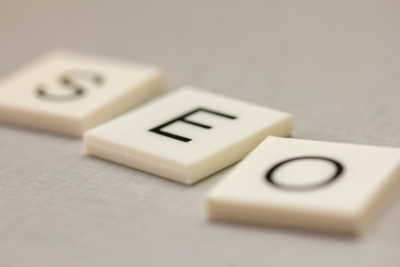Regarding this elaborate User-Centered Design (UCD) principles guide, we live in a world where everything changes extremely fast. As a result, this UX Design Process fosters new products, degrees, careers, methodologies, and the like to flock to the online marketplace daily. Notwithstanding, it is somewhat scary to imagine that school graduates will be in positions that do not exist in 2020.
On that note, we are now witnessing a clear trend—most Fortune-five companies no longer push products to the market. Instead, they focus on the user to personalize a product and, ultimately, deliver what they (the client) want. This switch provoked some significant changes in careers. For example, up till a couple of years ago, we saw many position openings for business product sales marketing.
Ultimately, we now see more and more posts related to humans, for instance, human-centered innovation, user-centered design, and the like. This trend is evident in companies that invest in innovation, such as fast-growing startups (say Typeform) and large organizations (such as Banco Sabadell). To give you an idea, look closely at some leading business schools and universities.
By considering institutions such as IESE, Esade, and Stanford, you will see that they have started implementing user-centered design principles and frameworks in their programs. The main reason is that User-Centered Design (UCD) involves users throughout the design process. More so through various research and design techniques to create highly usable and accessible products for them.
Understand What User-Centered Design (UCD) Principles Entail To Webmasters
Today, User Interface (UI) and User Experience (UX) has emerged as a critical component of effective and user-friendly program development. More and more businesses are realizing how crucial integrating and creating user-centered designs is. As well as user-based interfaces that prioritize their customers’ requirements and preferences, UI/UX Design Training has become more popular.
To enumerate, the User-Centered Design (UCD) Approach is an iterative process in which webmasters focus on the users and their needs in each project design phase. In the UCD process, webmasters (design and development) teams involve users throughout the design process via various research and design techniques. This creates highly usable and accessible products for them.
Technically, the elaborate User-Centered Design (UCD) baseline outlines the phases throughout a design and development life-cycle. In particular, it focuses on understanding the end-user of the final marketplace product. The International Standard 13407 is the basis for many UCD methodologies. It’s important to note that the UCD process does not specify exact methods for each phase.
Agile is becoming increasingly common in software design and development, with its collaborative customer focus and iterative, test-driven approach. It’s gaining acceptance in organizations as an efficient and effective way to develop software-based products that make a difference. User-Centered Design (UCD) fits very well with Agile Methodology and other design and development principles.
Why The User-Centered Design (UCD) Approach Matters To Webmasters
According to the Interaction Design Foundation, UCD is an iterative design process in which designers and other stakeholders focus on the users and their needs in each phase of the design process. In other words, UCD is a collection of processes focusing on putting users at the center of product outlook. You can develop your digital product per customer requirements, objectives, and feedback.
To visualize the User-Centered Design (UCD) principles better, you may create a persona at the beginning of the project design process to have an example of a target you are trying to reach. In addition, you can even come up with a few project names. It represents a group with the same patterns: behavior, needs, goals, skills, attitudes, etc. Persona helps to make the right decisions.
You can make informed decisions about product features, navigation, interactions, visual design, etc. At the same time, this helps you prioritize the design work, understanding what the potential end-user needs and what functions are lovely to add and have. Equally important, the scenario is about the persona’s problems, while the use case is a series of steps for the persona to achieve the goal.
With that in mind, in the next section, we’ll examine the core ideas of user-centered design and the UX Design Process, illuminating how these ideas come together to produce remarkable digital experiences. Usually, the user-centered design process answers crucial questions about users’ tasks, goals, and beliefs. Likewise, a few questions are typically asked during the design development process.
Such as follows:
- Who uses your product, and what are their goals?
- What are users searching for, or what are they interested in?
- Is it easy for your users to understand what they should do using your product?
- How do your users see the process of completing a task, what do they say, and how do they do it?
- How much time do users spend figuring out how to do what they want?
For instance, if you look at leading companies like Mango, HSBC, Edreams, and others, you will see that they underwent an agile transformation and are now adopting this user-centered design approach. These two methodologies go together; we believe they are essential to successful innovation. Equally important, as mentioned, the user-centered design approach prioritizes users.
Meanwhile, User-Centered Design (UCD) is an iterative project layout process in which designers and other stakeholders focus on the users and their needs in each phase of the design workplan. It focuses the design on users’ needs, behavior, and preferences.
Principles:
- Research: In-depth user research underpins user-centered design. Understanding your target market, their difficulties, and the product’s usage environment is part of this process. Usability testing, interviews, and surveys help designers make decisions.
- Empathy: Designers must put themselves in consumers’ shoes to understand their motivations, sentiments, and frustrations. Empathizing with consumers helps designers create interfaces that resonate.
- Iteration: Prototyping designers want early and regular customer feedback. This feedback loop may detect flaws and adjust the design to match user expectations. Creating a consumer-focused product demands ongoing development.
- Usability: An easy-to-use interface should assist individuals in achieving their goals and ensure easy product usage.
- Inclusivity: The requirements of all users, including those with impairments, should be considered by designers. A broader audience may use the product if accessibility features like keyboard navigation and screen readers are included.
As you can see, the user-centered design process is quite simple—changing the design late will typically cost ten times more than changing it during the requirements stage. On that note, analysis and feedback are critical. Remember, the user-centered design process ensures you design and develop products precisely what your clients want. Let’s learn more about the UCD design process.
Getting To Know What The UX Design Process Entails For Novice Designers
Generally speaking, UCD is very often used interchangeably with Human-Centered Design, but there is a difference in that it is a subset of it. In other words, all users are humans, but not all humans will be your users (you wish!). Thus, the process requires a more profound analysis of users—your target audience. In this case, it is not only about the general characteristics of a person.
Instead, it targets users’ particular habits and preferences to develop solutions for specific problems. Realistically, user-centered design considers age, gender, social status, education, and professional background. At the same time, it also considers influential factors, product usage expectations and demands, and other essential things that may vary for different segments.
On the one hand, the User Experience (UX) Design process is an organized method for successfully implementing user-centered design ideas. On the other hand, the User-Centered Design process starts by identifying the target end users of the product and specifying the context of use. The aim is to establish why these users would be interested in your product and how they want to use it.
Remember, what is critical for some may be irrelevant for others. Thus, user-centered design is about deep research on users’ habits, from their interactions with the product to their vision of how it should look and behave. Understand your product and users first. Be that as it may, some essential elements and principles of a successful user-centered design process are worth mentioning.
Including:
- Visibility: Users should be able to see from the beginning what they can do with the product, what it is about, and how to use it.
- Accessibility: Users should be able to find information easily and quickly. They should be offered various ways to find information, for example, Call To Action (CTA) buttons, search options, website menu design, banners, pop-ups, etc.
- Legibility: Text should be easy to read. As simple as that.
- Language: Short sentences are preferred here. The easier the phrase and the words, the better.
Still, it is essential to group your data to formulate requirements and user goals that must be met to ensure that the user needs are satisfied. You start designing potential solutions only after these two steps are completed. The design phase can be iterative and can evolve from a rough concept to a complete design. Consider your goals as you start this iterative product design process.
In the end, you need to evaluate the product you developed by doing, for example, usability testing to get users’ feedback. This process should be repeated until the best design is achieved. It’s worth mentioning that, in most cases, the user-centered design process is divided into many phases that help designers, from the preliminary design plan investigation to the finished product.
The Vital Stages:
- Project Research: The UX design process begins with research. This entails learning more about the target market, their tastes, and the issue that your solution is trying to address. User interviews, surveys, and competition analyses are crucial during this stage.
- Design Planning: The design process begins when you fully grasp the consumers’ requirements. This stage involves establishing design goals, specifying user journeys, and developing user personas. A clear strategy gives the design team a path to follow.
- Structure Layout: Wireframing is the process of putting the structure and layout of the interface in a simple visual representation. On the other hand, prototyping entails creating interactive product models. Prototypes and wireframes are both valuable tools for evaluating and verifying design ideas.
- Regression Testing: An essential part of the UX design process is usability testing. It entails gathering input while watching actual people engage with the prototype. This input guides design changes and aids in identifying usability problems.
- Design Refinement: Designers make adjustments to the prototype based on user input to resolve any flaws that are found. Until the design satisfies the requirements and expectations of the user, this iterative process is carried out.
- Design Implementation: The design must be implemented as soon as it is complete. Designers collaborate closely with developers to guarantee the design is faithfully included in the finished product.
- User Testing: Following deployment, user testing is carried out to ensure the product performs as planned. Before the product is released, any outstanding problems are fixed.
- Product Launch: This starts with the post-launch process. Afterward, the product is finally available to the general market. After the launch, designers monitor user input and implement the required changes to enhance the user experience.
For beginner User-Centered Design (UCD) webmasters, these user-based requirements are found and defined through various design methods like focus groups, usability testing, card sorting, participatory design, questionnaires, and interviews.
How UCD Principles And UX Elements Interplay During Design Processes
The UX design approach is easily incorporated with user-centered design concepts that guide every process step. This ensures the product stays focused on the requirements and expectations of the consumers. It’s about designing and developing a product from the perspective of how it will be understood and used. That’s instead of making users adapt their behaviors to use a product.
Unfortunately, some companies still prioritize business goals over those of their users. As a result, this prompts them to design a product and only search for people interested in using it. Fortunately, this is where a user-centered design plan comes in—to advocate the exact opposite. Before developing your idea, you need to find and speak with (representatives) of your target users first.
This is because even though you have excellent features, breathtaking technologies, and other nifty tools, you’ll have a big problem without knowing your target. Suffice it to say that you will find yourself in a situation where, post-launch, you will need to spend a lot of money redesigning your features. Otherwise, you will end up in a situation where you lack interest in your idea to break even.
As you may guess, the result of employing a user-centered design in your process is a product that offers a more efficient, satisfying, and user-friendly user experience, leading to increased sales and customer loyalty. Eventually, the idea is to offer a product supporting users’ beliefs, values, attitudes, and habits. The UX design process incorporates various UCD application principles.
Some Applicable Principles:
- As a rule of thumb, it’s essential to consider the end user from the beginning. Ensure you offer a product supporting its users’ existing beliefs, values, attitudes, and habits.
- User research is the basis of the UX design process and is the next part where User-Centered Design (UCD) moves forward. All design decisions are informed by an understanding of the user’s viewpoint.
- To ensure that the design meets users’ practical and emotional requirements, designers actively seek out user input and feedback throughout the process, demonstrating their empathy with the user base.
- UCD’s dedication to ongoing development is shown in the iterative nature of the UX design process. User input is used to develop prototypes until the final product meets or surpasses user expectations.
- Usability and accessibility are critical issues at every stage of the design process, from wireframing to final implementation, and are highlighted in User-Centered Design (UCD) principles.
In layman’s language, user-centered design improves the user experience. While it can be applied to almost any product, it helps to understand users’ needs and preferences regarding product features, tasks, goals, user flows, etc.
In Conclusion;
The User-Centered Design (UCD) Approach is the foundation of the UX design process and successful UI/UX design training. By prioritizing user research, empathy, iteration, usability, and accessibility, designers may produce digital products that surpass users’ expectations and fulfill their requirements. It encompasses producing profitable, user-friendly, and captivating applications.
Specifically, this also helps foster end-user products that make an excellent first impression on consumers. Adopting these concepts in the highly competitive digital design realm is essential to create outstanding user experiences. It has become one of the most critical user interface design and user experience development requirements utilizing user-centered design principles.
UCD should be implemented throughout the customer experience without guessing or personal opinions. What matters is what your users say and do. Every “touchpoint” a customer has with the product should be analyzed, well-designed, and effectively developed. Take an industry-recognized Online UX Course or UI Design Certificate, Design Thinking, UI Design, or related material design topics.
Some Other Related Courses:
- Critical Design Thinking Courses
- Become A UX Designer From Scratch
- User Research – Methods And Best Practices
- Courses On Conducting Usability Testing
Finally, you have a complete guide about the vital User-Centered Design (UCD) principles to consider in your next design project. Furthermore, you can always Consult Us anytime for more help and support. Good luck on your learning and implementation journey!








I absolutely love your blog.. Excellent colors & theme. Did you develop this site yourself?
Please reply back as I’m wanting to create my very own site and would love to know
where you got this from or what the theme is called.
Thanks!